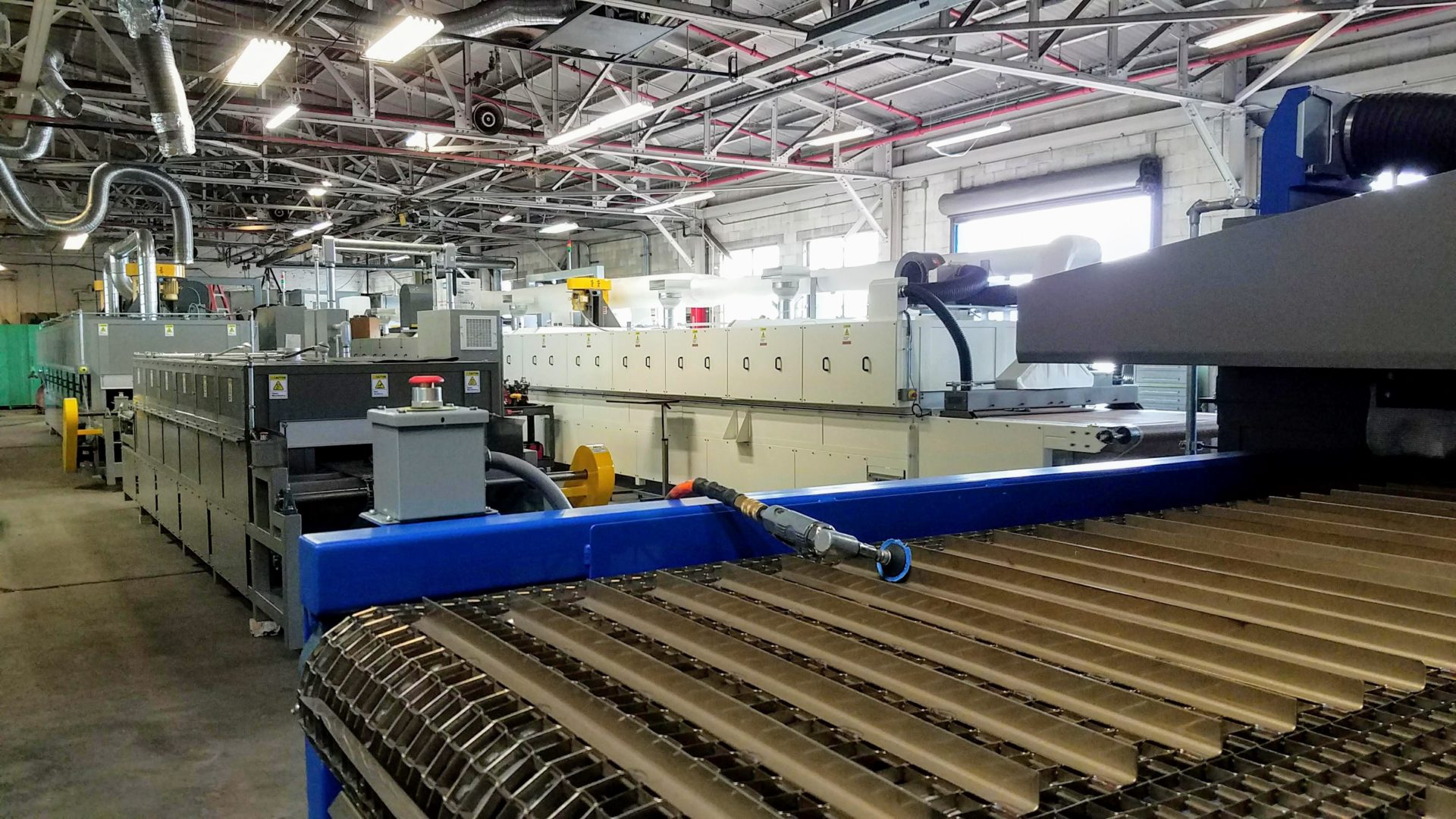Infrared Heating Technologies (IHT) manufactures a wide variety of standard and custom industrial ovens and industrial heat treating furnace systems based on a number of heating technologies including tungsten short wave electric infrared, medium wave quartz tube electric infrared, medium wave panel heater electric infrared, long wave gas catalytic infrared, direct fire natural gas infrared, electric convection, natural gas convection, infrared/convection combination, silicon carbide radiant, rod over bed (ROB) and strip heaters, alloy sheathed resistive heaters, and direct fire gas.
silicon carbide radiant, rod over bed (ROB) and strip heaters, alloy sheathed resistive heaters, and direct fire gas.
Heating Technologies, Elements and Sources
- tungsten short wave electric infrared
- medium wave quartz tube electric infrared
- medium wave panel heater electric infrared
- long wave gas catalytic infrared
- direct fire natural gas infrared
- electric convection
- natural gas convection
- infrared/convection combination
- silicon carbide radiant
- rod over bed (ROB)
- strip heaters
- alloy sheathed resistive heaters
- direct fire natural gas
Deciding which heating technology is best suited for your particular application depends on many factors including but not limited to the process parameters, the fuel source availability (i.e. natural gas, propane, electric, steam), available floor space, available budget, and operating costs. As a custom oven and heat treat furnace manufacture, IHT will evaluate the customer’s application to determine the most suitable heating technologies based on all these factors.
Industrial Ovens Convection
Electric source and natural gas and propane convection source ovens implement convection air flow to transfer heat to the product load. Convection ovens are moreover less sensitive to part shape and position than radiant heating ovens, resulting in mostly uniform heat distribution throughout the part and part load. On the other hand, since the convection air temperature is nearly the same as the desired part load temperature, heat transfer is low, and convection ovens generally heat the product slow compared to radiant infrared or IR ovens. Also, gas convection must be built to Class A standard, and therefore must include exhaust of the natural gas combustion by-products, thus reducing the efficiency of the oven significantly.
Industrial Ovens Infrared
Infrared or IR systems primarily heat the product through radiation, although convection and conduction also contribute to the heating of the product. With Infrared or IR radiant heating, electromagnetic waves, (short wave IR, medium wave IR, or long wave IR), impart energy to the product to increase temperature. Radiant heat transfer is proportional to the temperature difference between the source, (the heating element), and the target, (the product), to the fourth power. And because the source or heating element temperature is much higher than the target or product temperature, this radiant heat transfer can be very high, resulting in much faster heating rates than convection.
Industrial Ovens Infrared/Convection Combination
Infrared/convection combination ovens offer the benefits of both convection, (i.e. uniform heating, convective assist heating and removal of moisture and solvents), and those of radiant infrared or IR heating, (i.e. fast heating, efficient heating), into a single industrial oven system. Our IR/convection combination industrial oven systems implement a single electric infrared source for radiant IR heat and plug/plenum and or axial mixing fans inside an internal duct system for the convection mixing and heating component. These ovens are ideally suited for pre-heating, drying, curing, and much more. Also, these ovens can be manufactured to Class A per NFPA 86 for processing solvents.
Electric Source or Natural Gas Source Industrial Ovens
The decision between a natural gas or an electric source oven is based upon several factors. Electric source utility is generally more available in industrial settings than natural gas, thus making electric ovens more prevalent than natural gas ovens. Also, for most smaller and medium size heat load requirements, electric ovens are generally less expensive to manufacture than gas ovens. Electric ovens also offer better temperature control, better efficiency, and better temperature zoning capabilities than natural gas ovens. Electric heat is also clean as it does not produce any combustion by products compared natural gas. However, for larger industrial oven applications, natural gas fired ovens can cost less to manufacture than electric, and since natural gas is typically less expensive than electricity, the operating costs of a natural gas oven can be lower than that of an electric oven.
Conclusion
Determining the heat technologies that are best suited to your specific set of circumstances is very important to the design of the industrial oven or heat treat furnace, and crucial to the overall success of the project. IHT will assist you in this process of determining the most suitable heating technology and industrial oven or heat treat furnace design. We look forward to hearing from you soon.
Call to speak with an applications engineer for a no obligation process assessment.
PHONE: (865) 535-0050
FAX: (865) 535-0352
EMAIL: info@infraredheating.com



